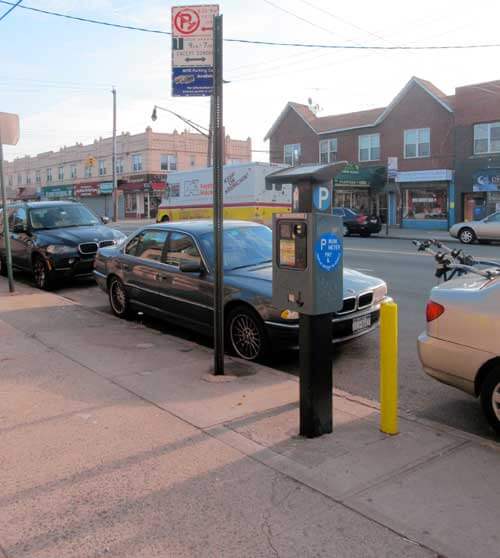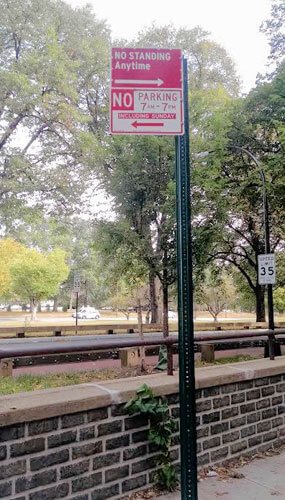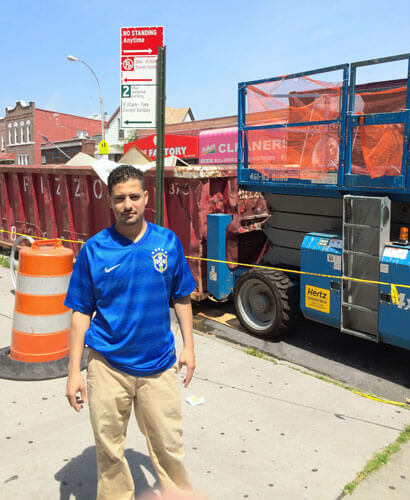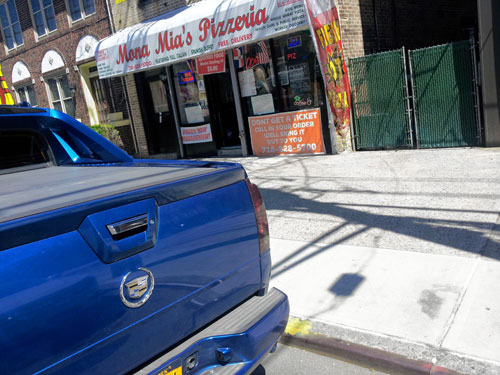Muni-meters, once found on a small portion of Morris Park Avenue, have become the only way to pay for parking along the commercial corridor.
The machines, which take credit cards for parking payment at boxes powred by solar panels, are eventually expected to replace all single-space parking meters, according to the city Department of Transportation. They have been installed the length of the Morris Park Avenue shopping district, from the Van Nest community to Williamsbridge Road.
Muni-meters were originally installed on Morris Park Avenue several years ago between Paulding and Radcliff avenues as part of a pilot program, and were supposed to create more parking, said former CB 11 district manager John Fratta.
“They said it was a success, but we didn’t think that it was,” Fratta said. “For us it didn’t add parking, but took parking away.”
Motorists tend to park with ample space from the vehicles next to them, eliminating any additional spots, Fratta said. The only positive Fratta saw with the muni-meters is that motorists don’t have to carry large quantities of quarters with them, he stated.
Merchant leader Robert Ruggiero of the Morris Park Alliance said that the most common comment that he has received is about the increased cost of parking, which was hicked from 75 cents per hour to one dollar per hour. By and large, the muni-meters will deliver an added amount of convenience to parking, and may possibly even curb excessive ticketing by traffic agents, Ruggiero said.
“Before, traffic agents could just pull up to a car when they saw the blinking light on an expired meter, stop and issue a ticket,” Ruggiero stated. “Now, they have to park, walk and review the time on each parking receipt.”
Motorists are expected to display the tickets on the dashboard of their car, with the exact time that their ticket expires. This will likely mean that there will be less ambiguity in terms of whether or not a parking violationsshould be issued, Ruggiero said.
Another positive with the muni-meters is that there should be less of a graffiti problem because there will be fewer total meter units, said Community Board 11 district manager Jeremy Warneke.
Aside from the increased cost to park, a major downside to muni-meters is that seniors or the handicapped may have to walk further to get to the muni-meter and then back to their car to drop off the ticket, Ruggiero said.
“We had an 87-year-old man who came into our funeral home to make pre-arrangements, and he had to walk across the street to a muni-meter and then back to his car,” Ruggiero stated, citing one example.
The city DOT has left signs in the heads of all the old meters alerting parkers to go to the muni-meter to pay, said Morris Park community activist Joe Bombace, who believes that muni-meters will be a success.
“I see people learning how to use the muni-meters, and it is going to be a learning curve,” Bombace said. “It only hurts that they did this during the holidays. Couldn’t they have waited until after the holidays were over?”
Patrick Rocchio can be reach via e-mail at procchio@cnglocal.com or by phone at (718) 742-3393






















